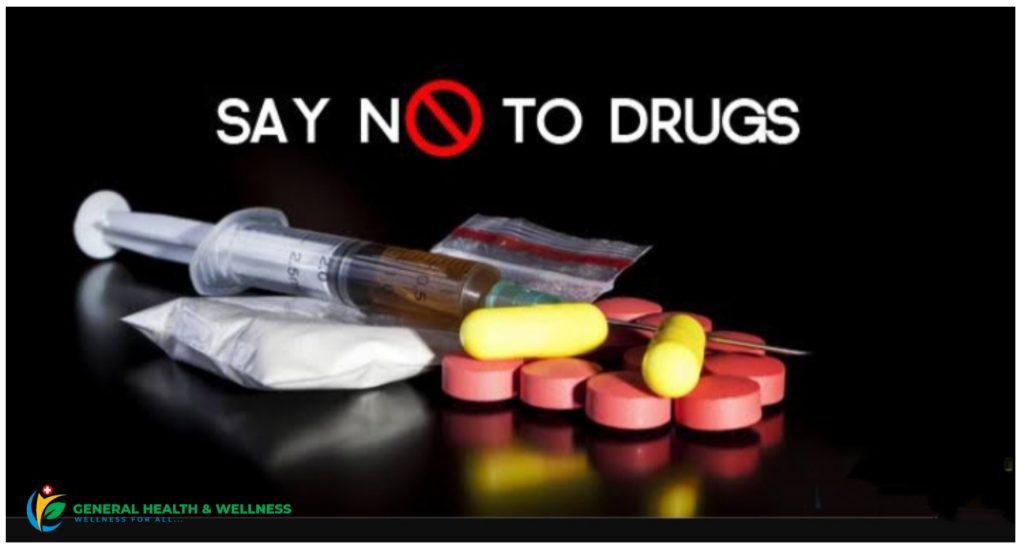
Drug abuse is a global health challenge that affects individuals, families, schools, and societies. Drug education is a key preventive strategy that empowers people, especially youths with the knowledge and skills to make healthy choices and avoid the harmful consequences of substance misuse.
This article explores the core concepts of drug education, the dangers of drug abuse, the Drug Abuse Resistance Education (D.A.R.E) program, and the broad benefits of drug awareness.
What Is Drug Education?
Drug education refers to the process of providing information, building skills, and developing attitudes that help individuals make informed decisions about drug use and its effects.
It includes:
- Teaching about different types of drugs (legal and illegal)
- The short-term and long-term effects of drugs on the body and mind
- Understanding peer pressure, decision-making, and refusal skills
- Encouraging healthy alternatives to drug use
🎓 Effective drug education starts early and is reinforced throughout adolescence and young adulthood.
What Is Drug Abuse?
Drug abuse (also known as substance abuse) is the intentional use of drugs in a way that is harmful to health or illegal. It includes both legal substances (like alcohol, prescription medication, or tobacco) and illegal drugs (like cocaine, heroin, cannabis, or methamphetamines).
Common Signs of Drug Abuse:
- Sudden changes in behavior or mood
- Decline in academic or job performance
- Physical signs like red eyes, poor hygiene, or weight changes
- Social withdrawal or new peer groups
- Unusual spending or financial problems
Health Effects of Drug Abuse:
- Brain damage and mental illness (anxiety, psychosis, depression)
- Liver, heart, and lung damage
- Increased risk of accidents, violence, and suicide
- Addiction and dependency
- Risk of contracting diseases (e.g., HIV/AIDS through shared needles)
🧠 Drug abuse not only harms the individual but also disrupts families, communities, and entire health systems.
What Is the Drug Abuse Resistance Education (D.A.R.E) Program?
The D.A.R.E. program is a school-based drug prevention initiative originally launched in the United States in the 1980s. It is now implemented in over 50 countries.
Key Features of the D.A.R.E Program:
- Delivered by trained police officers in classrooms
- Focuses on refusal skills, decision-making, and assertiveness
- Covers topics on alcohol, tobacco, drugs, and violence prevention
- Includes interactive lessons, role-playing, and student engagement
- Emphasizes confidence, responsibility, and peer resistance
📚 Modern D.A.R.E curricula include mental health awareness and coping strategies for stress and peer pressure.
10 Smart Health Habits to Adopt in Year 2025
Top 5 Benefits of Drug Education
1. Increased Awareness
Students and community members learn about:
- The dangers of drug misuse
- How drugs affect the brain and body
- Legal consequences of drug possession or trafficking
2. Early Prevention
Drug education reduces:
- The likelihood of first-time drug use
- Curiosity and experimentation, especially in adolescents
3. Empowers with Refusal Skills
Participants learn how to:
- Say “no” confidently
- Handle peer pressure
- Make healthier social choices
4. Supports Families and Schools
Educated students are more likely to:
- Communicate with parents or teachers about risky behaviors
- Seek help early for themselves or peers
- Improve their school and social environment
5. Promotes Healthy Lifestyles
Drug-free youth are more likely to:
- Stay in school
- Engage in sports and creative activities
- Build successful futures
Quick Facts About Drug Education
| Fact | Details |
|---|---|
| Early drug education can reduce drug use by up to 30% | National Institute on Drug Abuse (NIDA) |
| Peer influence is the #1 risk factor for teen drug use | CDC Youth Behavior Survey |
| Over 70 countries implement school-based drug education programs | United Nations Office on Drugs and Crime (UNODC) |
| Drug abuse is linked to over 11 million deaths globally each year | World Health Organization (WHO)
|
Simple Action Plan for Parents, Educators & Communities
For Schools:
- Integrate drug education into the health curriculum
- Invite professionals for awareness seminars
- Promote a zero-tolerance policy and counseling support
For Parents:
- Keep open conversations about drugs and choices
- Know your child’s friends and activities
- Be a role model—avoid substance misuse at home
For Communities:
- Support youth engagement programs (sports, arts, leadership)
- Campaign against drug trafficking and abuse
- Collaborate with law enforcement and NGOs
Professional Advice from Health Experts
“Drug education must be more than warnings, it should be about equipping young people with tools to make better decisions.”
— Dr. Amina Yusuf, Public Health Educator
“Teaching teens how to recognize pressure and handle stress is just as important as telling them drugs are harmful.”
— Mr. Charles Emeka, Secondary School Counselor
Drug education is more than just telling people to say “no.” It’s about empowering minds, building resilience, and equipping communities to make informed, responsible choices.
By promoting strong values, open communication, and preventive education, we can fight the growing challenge of drug abuse one student, one family, and one community at a time.




